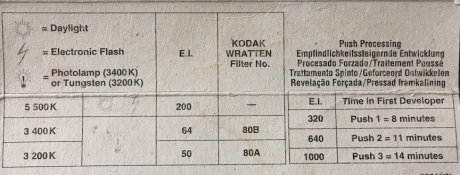Excellent information, particularly the Fuji E-6 Tech Bulletin. This alone will give me lots of things to chew on and experiment with.
First, I am a raw novice at this E-6 developing process and started with the basic 1 Quart Arista kit from Freestyle so my current process is pretty primitive. I really started this to determine if I could reduce some costs while still enjoying color slide film. I have used up this kit so I will need new chemicals to continue. The price was certainly reasonable but there may be better kit options out there.
I think the initial results are positive though certainly not perfect. Of course, as always, there are a number of variables at play. To start, all of my slide film is expired. For example, the Velvia 50 I am working with expired in 2012, my Provia X expired in 2015, so I think it is a pretty good bet that I will not be getting the best results no matter how good I get with developing. However, that being said, the three rolls of Velvia 50 I developed yesterday turned out relatively well.
In general I am being pretty conservative relative to the capacity of my chemical. The kit recommends developing 8 rolls of 135/36 or 120. When all was said and done I developed 6 rolls of 135/35 and 4 rolls of 120, so a tad more then what was recommended but I don't think it was excessive.
As an overall observation so far everything that was developed was darker then I would have expected, but this is almost certainly caused by the age of the film. In most cases those films exposed normally, one stop push or two stops push turned out decently with no outrageous problems or color shifts. So far I am encouraged so I think I'll shoot some more of my expired film, buy another kit, and give it another go.
I will probably just pick up another Arista kit from Freestyle unless someone can recommend something else.
BTW, thank everyone of you for the information you have provided so far.















